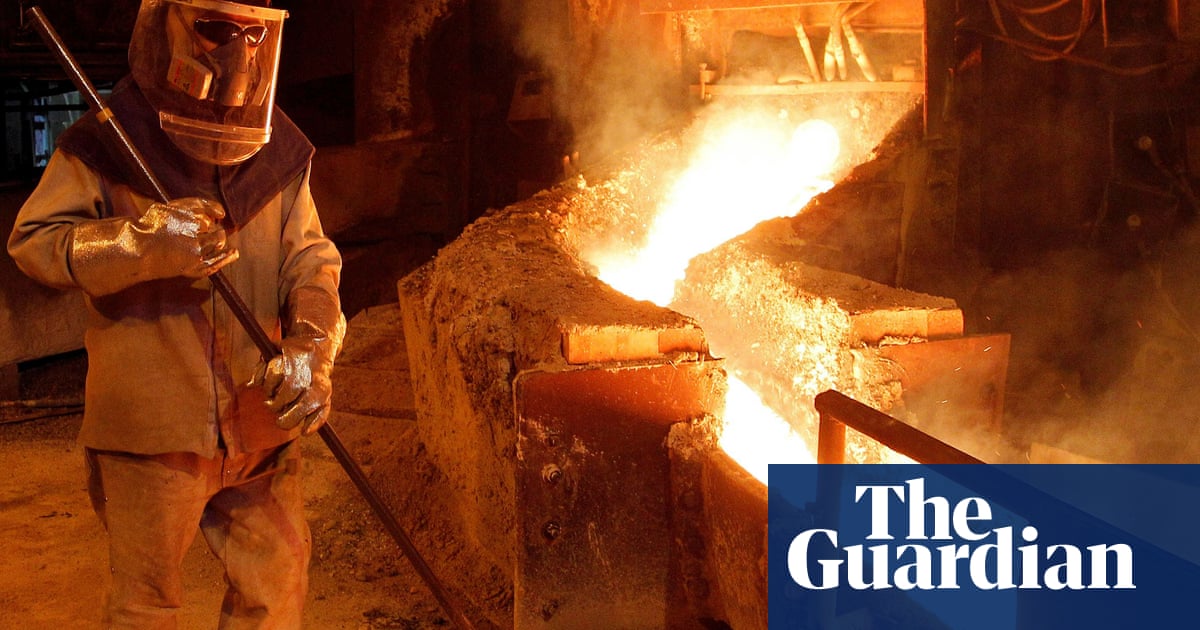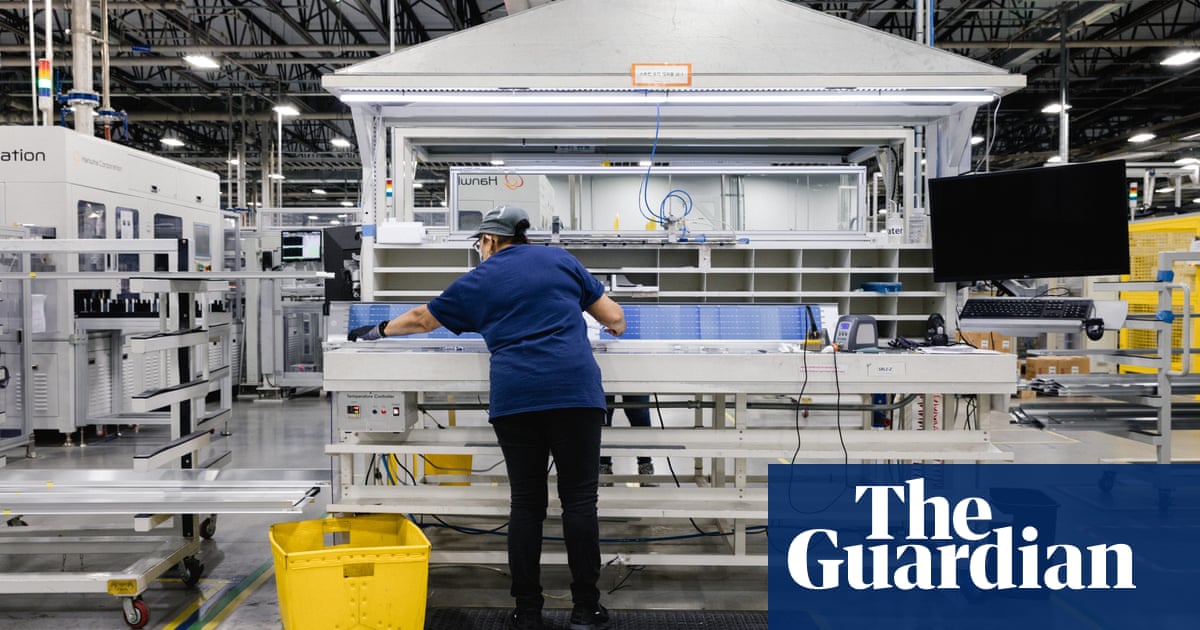A poll from the conservative Cato Institute recently went viral. It found that 80% of Americans think the country would be better off if more people worked in manufacturing. At the same time, only 25% of respondents said they themselves would be better off working in a factory. What should we make of the results?
First, there’s nothing contradictory between these figures. It’s easy to see how it would be good for the country to reshore manufacturing jobs, even if it’s not good for you, personally, to work in a factory. Imagine a local pharmacist in an industrial town. He can see how his business would benefit from the expansion of a nearby plant. Yet he could also see that he would personally lose out on a lot of income if he gave up his trade and marched into the factory himself. The same can be said for any number of other workers. The reason so many people find appeals to reindustrialization attractive is because life was undoubtedly better when the old factories in their town were buzzing with activity than it is today, where they sit idle.
Second, that 25% figure represents a lot of people. Across the political spectrum, libertarians at Reason Magazine, liberals at the Financial Times, mainstream conservatives, and even some on the far left have misread this figure. They think 25% indicates a woefully low ceiling for appeals to reindustrialization. Yet currently only 8% of Americans are directly employed in manufacturing. If we gave the people what they wanted, we would more than triple the amount of manufacturing jobs in the United States, an increase from about 12.7 million workers to more than 40 million. That is not small, it’s seismic. That a quarter of Americans think they would be personally better off with a factory job – jobs that are often dangerous and difficult – represents a scathing indictment of the so-called “knowledge economy” that promised prosperity but has often delivered devastation instead.
Back in 1987, the economists Stephen Cohen and John Zysman warned:“Lose manufacturing and you will lose – not develop – high-wage service jobs.” How prescient they were. Everywhere factories have fled, social rot has followed. Since then, wage growth for most Americans has been stagnant. For those without a college degree it has declined. The promise of a “service economy” was built on the myth that jobs in services could simply replace jobs in manufacturing, without any real trade-off. But, as experience has shown, many service jobs have proved to be stubbornly low-waged. And there is good evidence that, all things being equal, jobs in manufacturing still offer pay advantages over jobs in services. Moreover, as developmental economists have long acknowledged, the health of a nation is tied to the health of its industrial heartlands. Just look at China’s explosive rise to see how important manufacturing is to a nation’s economic strength. Or, alternatively, look at the deindustrialization of the United States, and now Germany, for examples of the equal and opposite effect. A decline, especially a rapid one, in manufacturing is linked to a decline in the social and economic health of the country as a whole.
Still, some argue that the only thing special about manufacturing jobs in the US was that the sector was highly unionized and that in a more pro-labor environment, service jobs would make just as much money as factory jobs. For instance, Matt Bruenig notes: “McDonald’s workers in Denmark make more than Honda workers in Alabama.” He’s right. Yet, as he knows, the Danish example doesn’t just show the power of unions, it actually helps make the case for a strong manufacturing sector. For one thing, Danish manufacturing workers make nearly twice the amount that Danish McDonald’s workers do. For another, Denmark employs nearly twice as many (15.7%) workers in manufacturing than does the United States (8%). And, according to the World Bank, manufacturing counts for a significantly larger portion of Denmark’s GDP (about 16%) than it does in the United States (about 10%). Ultimately, a major reason Danish McDonald’s workers can earn high wages is that, thanks to intelligent industrial policy, Denmark has retained its manufacturing sector. It is because blue-collar Danes earn high wages that McDonald’s can afford to pay high wages. The same can’t be said of the United States.
While unionized service workers at say, Starbucks, may be able to win significant wage increases through union bargaining, they won’t be able to make anything close to the wages made by union auto workers. And that is not due to a lack of effort or heroism on the part of the baristas. It’s structural. Manufacturing jobs simply have greater wage potential than many jobs in services because they have more room for productivity growth and a higher degree of leverage to win wage demands.
Increases in productivity, the amount of work accomplished by each worker in a set period of time, make firms more efficient and more profitable. As productivity increases, so do profits, which can translate to higher wages through bargaining. But service firms and factories have very different productivity curves. A Starbucks store can introduce more efficient espresso machines but ultimately the potential for increased productivity is limited by the nature of the business itself. Starbucks is selling a service, a consumer experience, and it’s hard to increase the per-worker output of an experience. This is a problem across the service sector where the rate of productivity growth remains low. By contrast, manufacturing firms can rapidly increase the output of each worker by introducing new techniques and technologies.
As a result, these workers have a regular claim to corresponding wage increases – each year they get more productive, they make the company more money, and therefore the company can afford to pay their wage demands. Still, whether they can win those demands depends on leverage. Here too manufacturing workers have the advantage. A strike in a key auto plant can shut down all downstream operations, resulting in windfall losses quickly. Yet no strike at any given Starbucks store could have the same effect. Productivity and worker-leverage give manufacturing its unique high-wage potential, and for these reasons, a strong manufacturing sector has a salutary effect on the entire economy.
Even for union baristas, manufacturing matters.
Besides the pay advantages, there are other good reasons for reshoring manufacturing. As John Maynard Keynes argued, national self-sufficiency, the ability of a nation to provide its own industrial necessities, has all sorts of benefits. Including increased leverage in trade negotiations, more sovereignty over economic policy, and greater potential for robust social programs (remember, none of the famously generous Nordic states allowed their major industries to shrivel and die the way that Britain and the United States have). Put simply, if we want more social equality, we need a better economic balance. Consider that in 1960 almost 95% of the clothing worn by Americans was made in the US – today it is 2%. And unionized American garment workers made more then than Bangladeshi garment workers make now.
Finally, reindustrialization is great politics. With the left struggling to reach working-class voters, an economic appeal that reaches some 80% of the country is a good way to win back favor. Donald Trump’s chaotic and contradictory policies won’t yield an industrial renaissance, and his fumbling of the economy could make it yet harder to do so, but while we are in the political wilderness the left should figure out the right mix of industrial policies that can bring back manufacturing jobs. We need to figure out an exit path from neoliberal globalization and that involves a wholesale rethinking of trade and industrial policy; immigration and labor market policies; monetary and fiscal policies.
The good news is there is hope. As UAW’s president, Shawn Fain, notes, even a modest reorganization of economic policy can result in an instant boost in new manufacturing employment. By the union’s calculations more than 50,000 new jobs could be reshored simply by filling out the capacity of existing plants. That may not sound like a lot, and it’s far short of the 25% figure, but if you’re among those newly employed it could mean the difference between scraping by in a post-industrial town and having a living wage with union rights.
Beyond the short term, US deindustrialization, ironically, could be an advantage for its industrial rebirth. After the second world war, Europe saw the most fantastic industrial turnaround ever recorded. Decimated economies such as France and Germany, where industrial towns were bombed to smithereens, suddenly emerged as manufacturing powerhouses. How? The destruction of their old factories gave them a fresh start. Industrial policy-makers didn’t have to deal with stubborn institutional inertia or outmoded infrastructure. While British firms struggled after the war, unwilling to build new plants, French and German manufacturers, with a clean slate upon which to build, surged ahead.
Walking through America’s deindustrialized zones is a bit like walking through Dresden after 1945. Maybe then, with a clean slate, we can rebuild better than before.
-
Dustin Guastella is a research associate at the Center for Working Class Politics and the director of operations for Teamsters Local 623

 2 months ago
42
2 months ago
42

















































